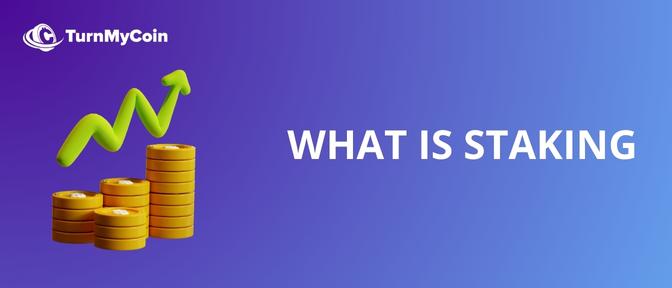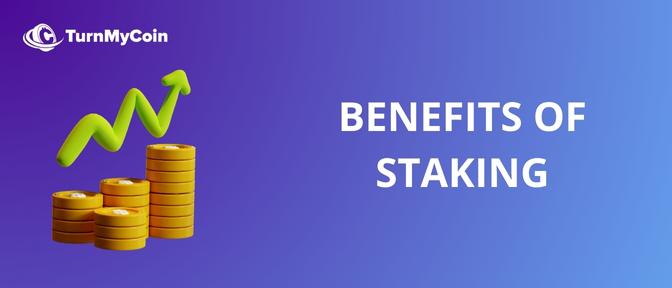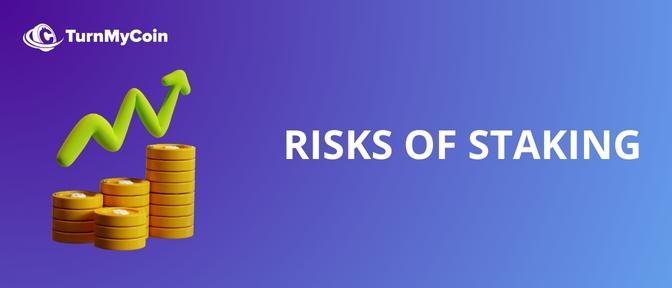Last updated on January 19th, 2024 at 06:46 am

How do you stake cryptocurrencies ? It appears that you are keen on understanding the art of staking cryptocurrencies. Well, let me enlighten you, it’s a highly lucrative venture to bolster your financial earnings.
In essence, staking involves holding and authenticating transactions of cryptocurrencies on a blockchain network. This process reinforces the security and sustainability of the network. And the most enticing aspect? You can attain passive income whilst doing so!
Yet fret not if you are a novice in the world of crypto and pondering about “how do you stake crypto?”. Staking word seem complex, but it’s not a task beyond understanding. In fact, allow me to walk you through the intricate steps of how to stake crypto.
First and foremost, you must locate a cryptocurrency that endows staking rewards. With an abundant range of options available, it’s essential to conduct thorough research and select the one that suits your requisites.
Once you’ve selected your desired crypto, you must establish a digital wallet to preserve it. Consider it to be akin to a bank account for your virtual currency. It’s imperative to ensure that your wallet is secure and safeguarded akin to any valuable asset.
Now, here’s where things get a bit technical. You’ll have to download and operate a staking client, which essentially is a software that facilitates your crypto-staking endeavors. Do not worry, as most of these clients are user-friendly and easy to maneuver.
Subsequently, after the client is set up, it’s time to initiate your staking expedition! Simply hold a specific amount of your chosen cryptocurrency in your wallet and retain it for a predetermined period. The duration you stake for is proportionate to the rewards you can obtain.
Thus, that concludes the fundamentals of staking cryptocurrencies. For a better grasp of how do you stake crypto ?, I’d suggest you peruse through this guide.
Table of Contents
What is Staking?

Stake cryptocurrencies involves holding funds in a wallet for a specific duration to support network operations and earn rewards. Essentially, this process necessitates users to lock up their funds for a predetermined time. PoS consensus mechanisms, such as those employed by Ethereum and Cardano, require staking, which is an integral component of many blockchain networks. Unlike PoW, which entails miners solving complex algorithms to validate transactions and receive rewards, PoS enables users to secure the network by staking their tokens.
The staking process involves entrusting or securing funds in a validator node or pool, depending on the blockchain. Validators are accountable for verifying transactions and adding new blocks to the chain. For their contributions, users receive a fraction of the network’s transaction fees and block rewards.
The amount of compensation for staking is contingent on multiple factors, such as the network’s inflation rate, the quantity of tokens staked, and the staking duration. Ordinarily, staking for an extended period yields higher rewards. Staking has grown in popularity among cryptocurrency traders and investors since it enables them to earn passive income without engaging in active trading. It also enhances the network’s decentralization and security, thereby making it an indispensable aspect of several blockchain ecosystems.
How to Stake Cryptocurrencies

Cryptocurrencies are digital money that you can earn by staking them. It’s like planting a money seed and waiting for it to grow. But, you need to be vigilant and do it the proper way. Here, we will talk about what you need to how do you stake cryptocurrencies?.
Step 1 – Choosing a wallet: To start, you need to choose a staking wallet. It’s like a money purse that holds your digital money. There are many different types of wallets, like hardware wallets and software wallets. You want to pick a good one that works for the cryptocurrency you want to stake.
Step 2 – Setting up a staking node: After you choose a wallet, you need to set up a staking node. It’s like a computer or server that helps you validate transactions on the network. It can be a little tricky to do, but many staking platforms offer help with setting it up.
Step 3 – Understanding staking rewards: As a staker, you can earn rewards for helping to validate transactions on the network. How much you earn depends on how much , how long you stake cryptocurrencies and how much you stake it for, and what rewards the network offers. It’s important to know what the rewards are before you start.
Step 4 – Managing risks: Stake cryptocurrencies can be risky. You could lose your staked cryptocurrency if the network gets hacked or if something goes wrong with your staking node. To protect yourself, choose a good staking platform or wallet and keep your staking node updated with the latest software.
So, that’s it! Remember, staking cryptocurrencies can be a fun and easy way to earn money, but you need to be careful and do it right. Good luck.
Benefits of Staking Cryptocurrencies

Staking cryptocurrencies can be pretty cool, and it’s not just about earning passive income. At this point, You know how do you stake crypto ? Let’s dive into some of the benefits of stake cryptocurrencies, shall we?
Earn Passive Income
Staking cryptocurrencies presents a principal advantage of acquiring passive income. Through possession and staking of a specific quantity of a digital asset, those who stake can attain a percentage of the cryptocurrency as compensation for their contribution to the network. This affords an enticing option for those seeking a stream of passive income.
Lower Risk
Compared to the conventional practice of cryptocurrency mining, staking emerges as an option that poses lower risk. Mining necessitates significant capital investment in hardware and energy expenses, thus rendering it a gamble for inexperienced investors. Conversely, staking merely demands possession of a particular quantity of cryptocurrency within a digital wallet, thereby conferring greater accessibility and minimizing risk.
Support the Network
Staking is a crucial process for supporting the blockchain network’s operations. By staking, individuals contribute to the network’s security and validate transactions, ensuring the blockchain’s smooth operation. This helps to maintain the network’s integrity and protect it against potential attacks.
Incentivize Long-Term Holding
Staking incentivizes long-term holding of a digital asset. Rather than selling or trading their assets, stakers are encouraged to hold onto their cryptocurrency to earn rewards over time. This can help stabilize the market and prevent volatility caused by short-term speculation and panic selling.
Potential for Higher Returns
Staking can potentially offer higher returns than other investment options. The reward for staking is often higher than the interest rates offered by traditional savings accounts. However, it’s important to note that staking rewards can vary based on the cryptocurrency’s price and network activity.
Risks of Stake Cryptocurrencies

If you’re thinking of investing in staking cryptocurrencies, there are some things you gotta know. Staking crypto can be risky business, so listen up. in the quest of how do you stake crypto ? Let’s discuss some of the risks that come with it.
Risk 1: Price Volatility
Cryptocurrencies are subject to a host of risks when staking. One of the most salient dangers is the peril of price volatility. Indeed, when you stake your digital assets, you are effectively locking them up for a predetermined amount of time. In the event that the cryptocurrency’s price falls dramatically during that window, you could suffer a substantial loss. This risk is even more pronounced for digital assets that possess a small market capitalization, as they often exhibit greater volatility than their larger counterparts.
Risk 2: Technical Risks
Another significant hazard that staking entails is technical risk. In order to stake your digital assets, you must possess a certain level of technical acumen, and configuring and maintaining a staking node is not always a straightforward task. Those who lack the requisite expertise may inadvertently commit an error that results in a loss of funds. Moreover, staking nodes may be vulnerable to malicious attacks, and if a bad actor successfully breaches your node, they could abscond with your assets.
Risk 3: Centralization
In addition to technical risks, staking also poses the threat of centralization. Cryptocurrencies were initially designed to decentralize power structures, yet staking can engender centralization. In cases where a small group of individuals controls the majority of the staking nodes, they wield an outsized amount of power over the network, thereby rendering it less secure and more exposed to attack.
Risk 4: Regulatory Risks
The regulatory environment surrounding cryptocurrencies is still uncertain in many parts of the world. If regulators decide to crack down on staking, it could result in your funds being frozen or confiscated. Additionally, the tax implications of staking cryptocurrencies can be complicated, and it’s important to consult with a tax professional before engaging in staking activities.
Conclusion
how do you stake crypto ? If you’re looking for a way to earn some extra dough while supporting the crypto network, staking might just be your thing. But, let me tell ya, it’s not all sunshine and rainbows. Staking cryptocurrencies can be risky business, so listen up!
Before you go staking your precious crypto, make sure you do your homework. Research the ins and outs of staking, choose a trustworthy staking platform, and be ready for some ups and downs. It’s not a get-rich-quick scheme, but with some patience and strategic investments, you might just see some sweet returns.
And hey, who knows, maybe one day you’ll be lounging on a tropical beach, sipping margaritas and living it up, all thanks to your staking investments. Or, you know, maybe not. But either way, happy staking! Just remember to stay informed and stay safe out there.